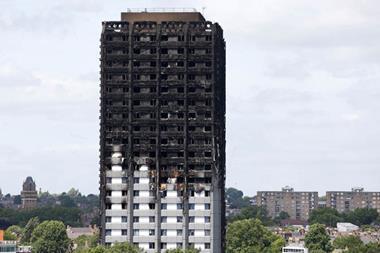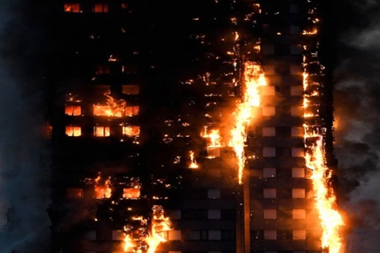Everything changed on the morning of 14 June 2017. Grenfell Tower was UK housing’s 9/11. From now on, more homes need to be built - and be built better. Hang the ideology.

The anger following the catastrophic blaze, which took dozens of lives, was nearly universal. There has been a clamour for answers, especially as to why the fire spread so quickly across a block when the decades-old fire design mantra was compartmentalisation and containment.
More fundamental heart-searching on every aspect of housing policy and provision will ensue. But the populace will require action, not just words; make no mistake, this will be at least a 10-year task. Witness the Ronan Point collapse in 1968: it was decades before tall buildings were constructed in numbers.
Shorter term, the initial priority will be to establish what went wrong. The cladding has been the focus of enquiries. Was there a fundamental shortcoming in the product or were there failures in execution?
According to a communities department statement, the types of panel “should not be used above 18m”. Was it the installation? Were fire breaks breached by services elsewhere in the building? Were instructions and evacuation protocols appropriate?
My hunch is it may be some combination of the above and more. The Ronan Point inquiry found out that although the large panel system had complied with regulations, it turned out to be inadequately robust, of itself, and the construction had cut many corners, including in fire separation.
Any subsequent rule changes, I imagine, could require that building and product design should minimise ‘execution risk’.
Rehousing need
Another immediate requirement is that dozens of households need rehousing, hopefully with a degree of sensitivity that was reported to be woefully lacking at least in the early official responses.
A nationwide audit needs urgently to be instigated across every block in Britain to document what systems are in place and whether the integrity of fire control is adequate. Another hunch: many will fail to come up to scratch.
Mid-term, a lot of these monstrous blocks are probably going to have to come down. I spoke to the former head of a major housing association who suggested that taking off the cladding and related repairs, let alone retrofitting sprinklers, was more expensive and problematic than pulling them down.

This would require a fairly massive increase in social housing construction. Private developers of towers might also face some searching questions, including possibly from off-plan investors who were trying to wriggle out of contracts, having failed to flip them on.
Longer term (but not too long term), housing has to be elevated to the absolute top of the political agenda. First and foremost, we need to build more homes. To do this, the model has to change; there needs to be a more tenure-neutral approach than the private-only mantra of David Cameron and George Osborne.
Their disdain for social housing providers was well documented in speeches and in scurrilous leaks to the press by their closest advisers castigating housing associations. A report by insurer Zurich Mutual issued days before Grenfell implied that cuts to social rents, ordered by Osborne, contributed to building quality among housing associations being performed at “the lowest specifications allowed”.
A more human touch
Another salvo was the extension of Right to Buy to housing association tenants, seemingly scribbled on the back of an envelope in the panicky run-up to the 2015 election, but since kicked into the long grass.
The housing white paper and much-maligned Conservative manifesto, however, looked fairly spot-on in promoting high volumes, with a tenure-neutral approach unthinkable in previous Tory policy. Gone is the laissez-faire stance and in its place is a greater role for government interacting with all providers and stakeholders. In fact, it is not too far off Labour.
Longer term, housing has to be elevated to the absolute top of the political agenda
Rather than once again reinventing the wheel, the white paper should serve as a template, to be overlaid with much more urgency and commitment and, in a lesson from Grenfell, a more human touch.
But this needs leadership. For years this has rarely been strong and certainly not stable. There have been 15 housing ministers since 1997. Gavin Barwell, who recently lost his seat, was by all accounts among the best of an extremely mixed bunch. But the post has been demoted to that of class milk monitor; a temporary audition for keen pupils with their eyes on a prefect’s badge.
The latest holder is Alok Sharma, whose only exposure to housebuilding seems, according to his own website, to have been campaigning against it in his constituency of Reading West.
No, UK housing needs a much bigger hitter and a more grown-up role, no longer at junior minister status but rather as secretary of state for housing, to bang not just the Cabinet table - but also heads together. There cannot be another Grenfell.






























No comments yet